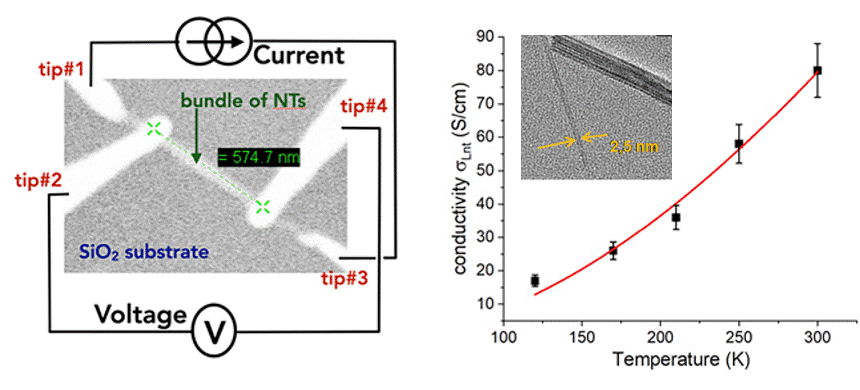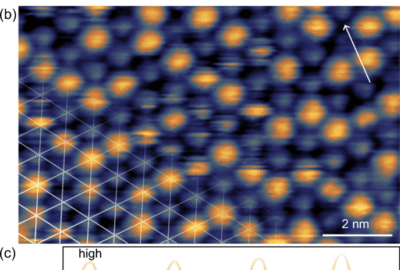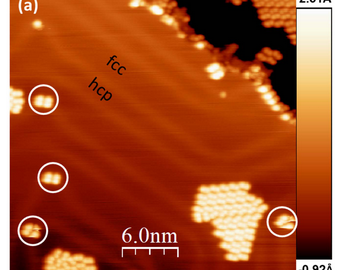publications, Réseau
Highly conductive tungsten suboxide nanotubes
We demonstrate a high electron conductivity (>102 S/cm and up to 103 S/cm) of tungsten suboxide W18O52.4−52.9 (or equivalently WO2.91−2.94) nanotubes (2–3 nm in diameter, ∼μm long). The conductivity is measured in the temperature range of 120–300 K by a four-probe scanning tunneling microscope in ultrahigh vacuum. The nanotubes are synthesized by a low-temperature and low-cost solvothermal method. They self-assemble in bundles of hundreds of nanotubes forming nanowires (∼μm long, few tens nm wide). We observe a large anisotropy of the conductivity with a ratio (longitudinal conductivity/perpendicular conductivity) of ∼105. A large fraction of them (∼65%–95%) shows a metallic-like, thermal activation-less electron transport behavior. Few of them, with a lower conductivity from 10 to 102 S/cm, display a variable range hopping behavior. In this latter case, a hopping barrier energy of ∼0.24 eV is inferred in agreement with the calculated energy level of the oxygen vacancy below the conduction band. This result is in agreement with a relative average concentration of oxygen vacancies of ∼3%, for which a semiconductor-to-metal transition was theoretically predicted. These tungsten suboxide nanostructures are prone to a wide range of applications in nanoelectronics.
Comments are closed






